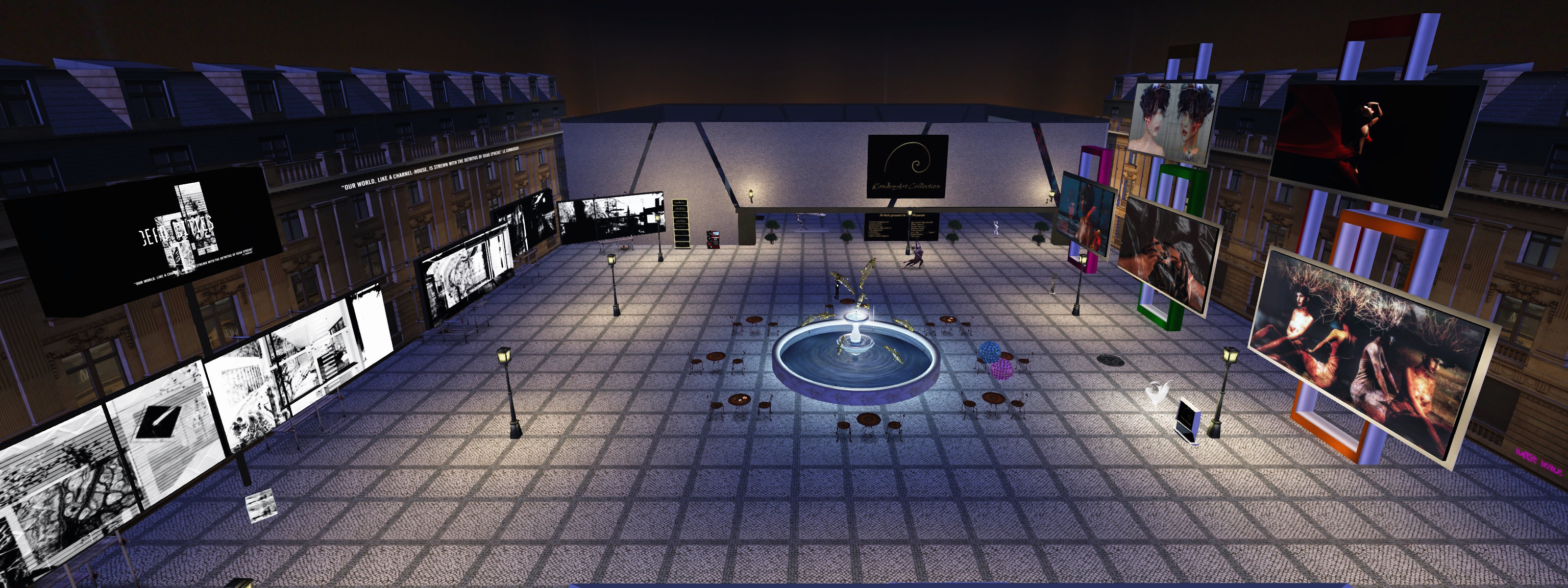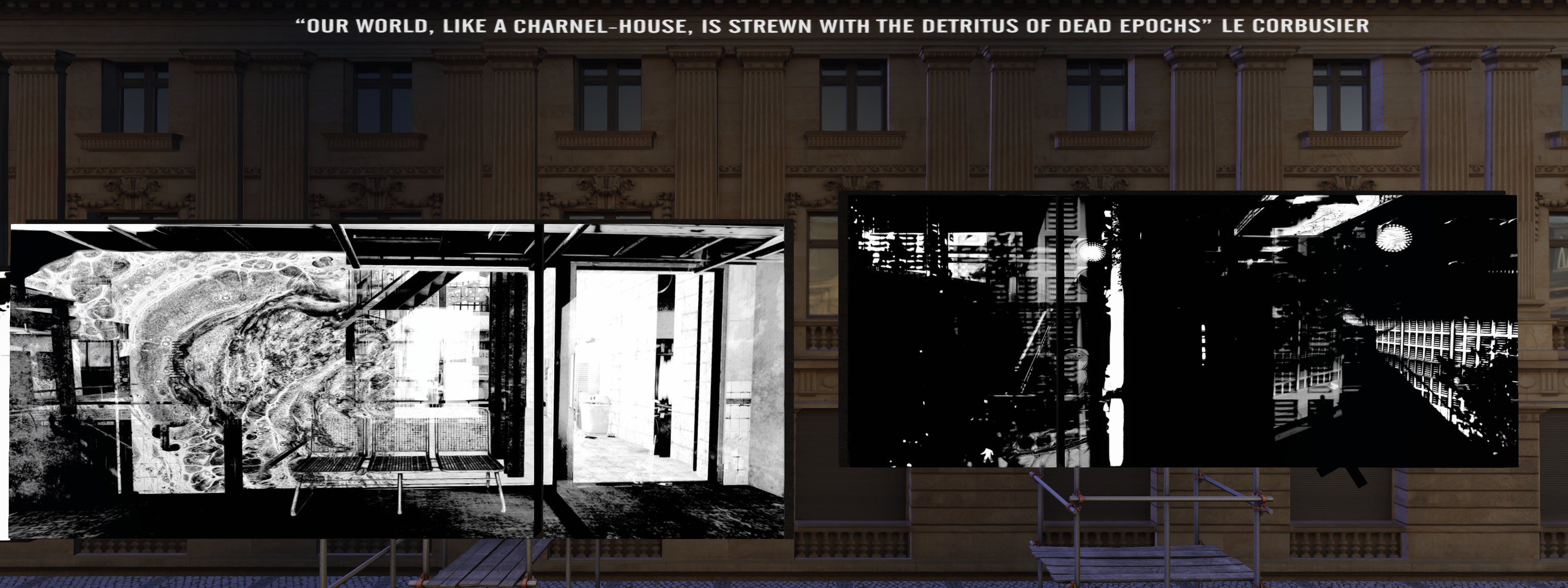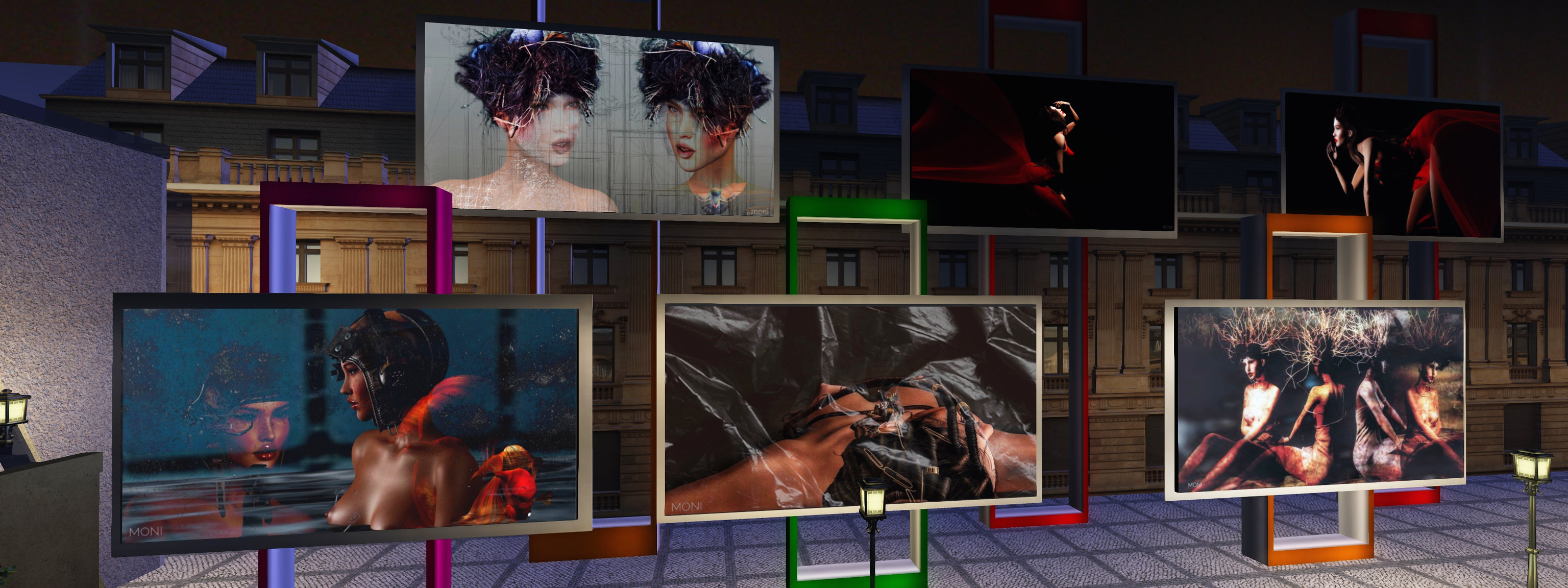
Monique “Moni” Beebe and Traci Ultsch are among a group of artists whose work I find immediately engaging, and which I always appreciate being able to see and appreciate. So any new exhibition by either of them is going to get me hopping with interest – and when they are exhibiting together, then I’m not so much hopping as I am leaping – which has very much been the case with Plastic People / Dead Cities, which opened at the Kondor Art Centre’s Art Square, curated by Hermes Kondor, on July 8th.
Now to be clear – this is not a joint exhibition in the sense of being a collaborative project between the two artists. Rather, and like their joint exhibition at Midgard Gallery in February 2021 (see: Moni and Traci at Midgard Gallery in Second Life), Plastic People and Dead Cities stand as two individual exhibition linked by theme and reflection, allowing them to be appreciated both individually and jointly, with certain truths to be found within them that may well be discomfiting to some.
With Dead Cities, Traci explores the impermanence of Second Life through the dual medium of exploring the cityscapes that can be found throughout the grid and the medium of reflections on the ideas of so-called occultist Psychogeography as it relates to the city of London and as espoused through the work of Iain Sinclair and Peter Ackroyd.

In short, the latter might be said to be explorations of the myths and legends that claim much of “modern” London (e.g. from the 1660s onwards) was built on occultist practices, and the idea the “spirit” of all who have dwelt in the city combine to inform its nature down the centuries, and that “spirit” in turn informs the nature of those dwelling in it today.
Thus we are presented with a series of bold monochrome images that, rather than presenting “traditional” views of buildings, streets, and so on, are multi-faceted in the way they have been layered to present us with glimpses of buildings and structure together with the ghostly outlines of something more – that spiritual element to their nature, so to speak. Similarly, the use of scaffolding to mount the images, some of which also has skulls sitting on it, encapsulates the idea of the present being informed by the past.
In taking this route, Traci also underscores her theme of emptiness / impermanence: by presenting facets of structures in this way, with the dark and light obscuring as much as revealing, Traci points to the fact that, like it or not – and contrary to SL myth) – nothing in this virtual realm is in any way permanent; it survives and is constantly rebuilt – like a city as great as London itself – only so long as there are people to populate it. When empty, it might as well not exist – and when the novelty of the platform does finally wane, Second Life and its cities and places will won’t exist.

By comparison, Moni’s Plastic People appears to be an altogether lighter, brighter presentation, both in terms of being a series of images that do utilise colour, and in their general theme.
In short, this is the idea that Second Life is a plastic – perhaps malleable might be a more appropriate term – world which we can all bend and shape into whatever we wish, and in which we can express ourselves howsoever we wish, in keeping with the old SL tenet, Your World, Your Imagination. Thus Moni presents us with a series of avatar studies that when first viewed, appear to reflect this in their presentation of “classically” posed images, touches of sci-fi, fantasy and the platform’s more adult elements.

However, I say “appears”, because – to me at least – there would seem to be a further layer to Moni’s images, evidenced through her use of a stanza from Frank Zappa’s 1967 song, Plastic People within her liner notes for the exhibition:
A fine little girl / She waits for me / She’s as plastic / As she can be / She paints her face / With plastic goo / And wrecks her hair / With some shampoo.
That song was written as a manifesto against conformity and materialistic culture. So is its inclusion in Moni’s liner notes for the exhibition simply a reflection of the malleably of our avatars, or is it a comment on the fact that whilst founded on the ideal of individual expression, SL is increasingly becoming a place of homogenised, materialistic conformity for many? Just look at the way a certain avatar body dominate the platform, or the manner in which “creativity” now seems to be more about looking good and buying the latest fashion.
If this interpretation might be seen as accurate, then it begs the further question: just who are the “plastic people”, the avatars within Second Life, or those who operate them? I’ll leave that to you to ponder.

Through these two exhibits, Moni and Traci offer collections of images that are in and of themselves captivating, whether or not one wishes to look deeper into them. At the same time, they each hold up a mirror, one of which encourages us to reflect on Second Life is a whole as it relates to us, and the other asking that will look directly on ourselves, and how we relate to the platform.
What we might discover in looking into either might not be comfortable to consider – but that does negate either exhibition. Indeed, I’d strongly recommend that anyone who likes to ponder on this virtual world in which we invest so much of ourselves, whatever the reason, pay a visit to Plastic People / Dead Cities, and spend time with the art and the artists’ own words.
SLURL DETAILS
- Kondor Art Square (Waka, rated Moderate)